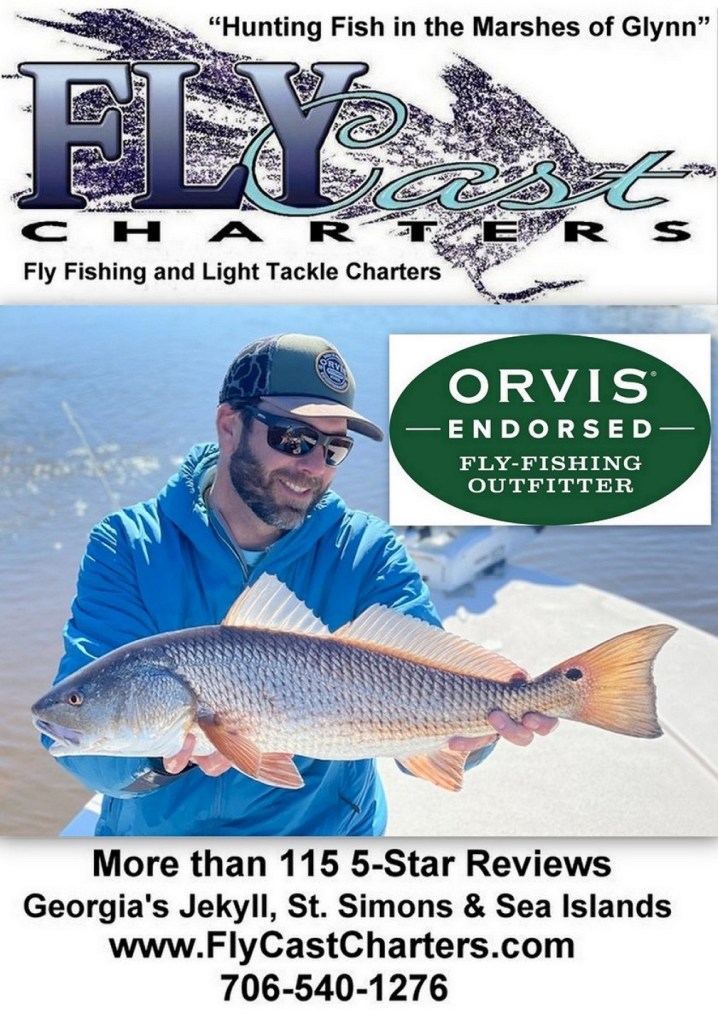Summer is the right time for wade fishing for smallmouth bass on West Virginia’s upper Greenbrier River!
On The Fly Freshwater
June 2023
By Jimmy Jacobs
Both the New River and its major feeder the Greenbrier River are well known for smallmouth bass fishing in West Virginia. Virtually All of that angling tends to be centered on float fishing, with the lower Greenbrier as the site of the boating action on that flow. There is, however, another portion of the Greenbrier that offers a very different experience.
Up in Pocahontas County, the headwaters of the Greenbrier offer a smaller stream that is ideal for wade fishing. Additionally, the Greenbrier River Trail follows its shoreline for an extended length, providing excellent access to the many shoals and flats on that portion of the river.
Although the lower Greenbrier and New are noted for yielding smallmouths that can top out at 4 to 5 pounds, the upper Greenbrier is not really a trophy fishery. Rather, smallies of 2 to 3 pounds are good catches, but the river hold lots of 12- to 15-inch bronzebacks.

The Greenbrier officially starts in northern Pocahontas County at the junction of its two major tributaries, the East Fork and West Fork of the Greenbrier. This site is at the community of Durbin, with the river then flowing southwest through the heart of the county.
Along that route in Pocahontas County, the river passes through four large tracts of public land. Those are Seneca State Forest, Calvin Price State Forest, Watoga State Park and the Monongahela National Forest. There also are a number of smaller accesses and bridge crossings.
Although often up to 200 feet wide or more, the stream tends to be rather shallow, to the point that during lower summer and fall levels it is difficult to impossible to float it even in canoes. That situation differs from the popular fall and winter float-fishing area farther down river. It also creates a different fishing season here. Summer is when wading anglers can access virtually the entire flow through the county.

Another benefit of the upper Greenbrier is its headwater position. This part of the river clears up much faster than bigger streams after rain storms. When the lower Greenbrier or New are running high and stained, this part of the river offers a better option.
The best of the access begins at the old railroad town of Cass that has been turned into Cass Scenic Railroad State Park. That is the site of the parking area for the northern trailhead of the Greenbrier River Trail, a multi-purpose hiking and biking pathway that follows the river southward to its exit from the county. In fact, some anglers venture down the Greenbrier Trail carrying rods, while riding on bicycles for greater mobility.

On a recent visit to the area, the On The Fly South crew explored the stream from Cass downstream to the community Clover Lick. Through there the river offered easy wading in often quite shallow water that was broken up by deeper runs or pools. The river also is wide enough that shoreline vegetation mostly does not interfere with casting.

Skipping over the shallows and targeting just the pools is the best bet during the summer months. Any of those deeper waters that are shaded by streamside vegetation are particularly good targets for a cast or two.
As with fly-fishing for smallmouths anywhere, streamers, Wooly Buggers or crawfish patterns work best. If you opt for the Wooly Buggers, try brown or orange color patterns to match the hues of crawdads. Additionally, purple Buggers are always good when targeting river bass. The other option is tossing popping bugs, since smallies are not shy about hitting those topwater offerings.

While the bronzebacks are the target of choice on the Greenbrier, don’t be surprised if you also hook a number of rock bass. These panfish that are often called goggle-eyes or redeyes (due to their usually vivid red eyes), inhabit the same areas as the smallmouths. They also have a mouth that is larger than most other bream species, which probably accounts for bass being included in their name.

Rock bass generally are in the 6- to 10-inch size range, though the world record is a bit more than 3 pounds. Still, catching one of these fish that tops a single pound is a trophy catch.
Any of the flies mentioned earlier will attract the attention of rock bass. However, they are less inclined to come to the surface after poppers than are the smallmouths.
Also be aware that the Greenbrier starting at Cass and downstream gets four stockings of trout each spring. There’s the possibility you may even hook one of those holdovers in June.
If you are looking to beat the heat of summer in the Mountain State, wade fishing for smallmouth bass on the upper Greenbrier River is just the ticket. Grab your 5- to 6-weight rig and give it a try this month.





